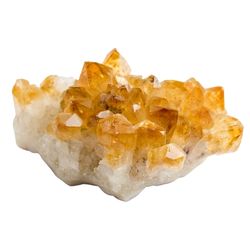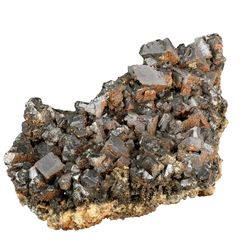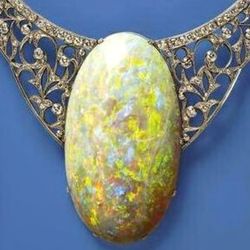Crystals are some of the most beautiful and mesmerizing objects found in nature. But how are crystals created? And how do their unique atomic structures result in those amazing shapes? In this article, we will explore how crystals are created within the earth, what causes them to have different shapes, and how their atomic structures make them so special. We will also take a look at some of the most famous and stunning crystals found around the world!
How Crystals Are Created
Millions of years ago deep beneath the crust of the earth hot spots were formed called magma chambers, the intense heat of volcanic activity, as the magma moved towards the surface of the earth it would slowly lose temperature crystallizing and forming hot igneous rocks, the heat from these rocks would push any groundwater towards the surface, as this water cools, ions would precipitate out as mineral crystals.
Quartz crystals would be formed from silicon and oxygen, feldspar would be created from potassium, aluminum, silicon, and oxygen, galena would be formed from lead and sulfur.
As these magma chambers slowly cooled over time, gas bubbles would be trapped inside the rock, and as the water evaporated minerals would be left behind creating crystals.
The Different Shapes of Crystals
Each type of crystal has a different atomic structure which results in their unique shape, for example, quartz has a hexagonal structure while galena is formed in a cube shape.
The way that the atoms are arranged in a crystal will also determine how it grows, if the atoms are able to bond in more than one way then the crystals can grow in multiple directions.


Unique Atomic Structures Within Crystals
What makes crystals so special is their atomic structure, each atom is arranged in a precisely repeating pattern, this pattern defines how a crystal will form.
There are 6 different shapes created by atomic structures these are, cubic, tetragonal, orthorhombic, monoclinic, triclinic, and hexagonal.
With the right conditions, crystals grow into geometric shapes that reflect the arrangement of their atomic structure.
The environmental conditions where crystals are formed allows most crystals to form in multiple geometric shapes, an example of this is a diamond, they are formed deep in the earth’s mantle have a cubic crystalline structure but can be formed into either cubes or octahedrons, the shape is determined by the natural conditions where it grows.
Factors that determine environmental conditions include pressure, temperature, and chemicals within the environment.
Diamonds tend to grow into cubes at lower temperatures within the earth’s mantle, and into octahedrons at higher temperatures.
Chemicals such as water, silicon, germanium, or magnesium could also have a bearing on influencing the shape of a diamond.
Famous Crystals
Now that we have looked at how crystals are created and what shapes they can take, let’s explore some of the most famous and stunning crystals found around the world!
The Hope Diamond is one of the most famous diamonds in the world, it is a deep blue colour and weighs 45.52 carats. The Gem also has a distinctive red glow that is said to be a phenomenon of blue diamonds.
The Hope Diamond is believed to be cursed and has a long and bloody history, it was first found in India over 4000 years ago and has since been owned by Kings and Queens, Hollywood stars, and even thieves!
Weighing over 563 carats the Star of India is one of the largest sapphires in the world, it has an unusual soft bluish-white appearance, there are also traces of rutile inside the stone that reflects light into its star-shaped pattern on the surface.
The Star of India was found in Sri Lanka over 4000 years ago and is now on display at the American Museum of Natural History in New York.
The Andamooka Opal

The Andamooka Opal is a huge 203-carat gem, it is a beautiful white opal with a multicoloured sheen of reds, blues, and greens. The Andamooka Opal was discovered in Australia in the 1940s, the opal was presented to Queen Elizabeth II in 1954 to mark her first visit to South Australia.
Conclusion
We hope you have enjoyed learning about how crystals are created, their formation within the earth, unique atomic structures, and shapes.
Crystal formations are fascinating due to their intricate designs, which can be attributed to the different ways that atoms bond together.
Every type of gemstone is unique, which is why they are so fondly admired for their appearance, natural healing properties, spiritual connection, and value.







